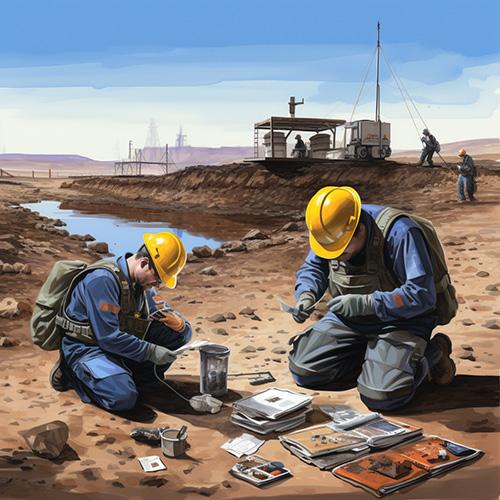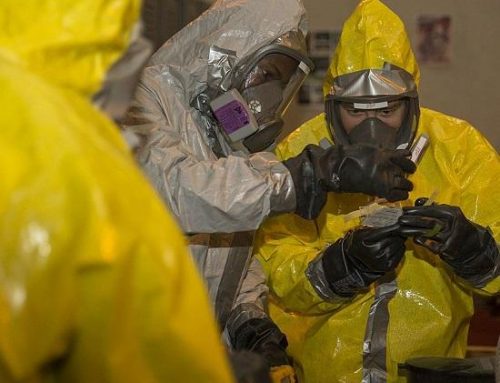Site Characterization within the Context of HAZWOPER
Executive Summary
Site Characterization within the Context of HAZWOPER involves a systematic evaluation of hazardous waste sites to ensure safe operations and effective emergency response. Adhering to OSHA’s regulations, this process encompasses several components and a phased approach, including preliminary assessment, sampling, site investigation, risk assessment, and remediation planning. Challenges like complex subsurface conditions and budget constraints must be addressed, and best practices must be implemented for success. Community engagement is a vital aspect, as detailed below, that further ensures the protection of workers, communities, and the environment.
Introduction
Hazardous Waste Operations and Emergency Response (HAZWOPER) refers to a set of regulations and guidelines established by OSHA to protect workers involved in hazardous waste operations. A key component of HAZWOPER is site characterization, which involves systematically evaluating and analyzing a hazardous waste site to gather critical information needed to ensure safe operations and effective emergency response.
Purpose of Site Characterization
The main purpose of conducting site characterization within the context of HAZWOPER is to identify and assess potential hazards associated with a contaminated site before cleanup or remediation activities commence. It aims to develop a comprehensive understanding of the nature and extent of contamination, sources of hazardous substances, potential exposure pathways, and associated risks to human health and the environment. This knowledge enables informed decision-making regarding worker protections, remediation strategies, emergency planning, and risk mitigation.
Regulatory Requirements
Site characterization is mandated under OSHA’s HAZWOPER standard 29 CFR 1910.120 as a compliance requirement before workers can enter a hazardous waste site. Employers have an obligation to perform a preliminary evaluation to identify site hazards and risks. The information gathered during site characterization is used to develop and update mandatory site-specific health and safety plans.
Process and Components
Conducting site characterization within HAZWOPER involves multiple components and a phased approach:
- Preliminary Assessment – Reviewing existing records, visual inspection, and interviews to gather background information on site history and contamination sources.
- Sampling and Analysis – Developing a sampling plan and collecting representative samples from site media like soil, water, air to test for hazardous substances in accredited labs.
- Site Investigation – Employing methods like geophysical surveys, soil borings, groundwater monitoring wells to further understand site conditions.
- Hazard Identification – Detecting and evaluating chemical, physical, and biological hazards based on sampling results and site reconnaissance.
- Risk Assessment – Evaluating potential exposure pathways, receptors, and health impacts to determine the level of risk.
- Remedial Investigation – Additional data gathering to support remediation planning if initial phases indicate complex or widespread contamination.
- Reporting and Documentation – Compiling all findings into a detailed site characterization report as per regulatory requirements.
Challenges
There are several potential challenges faced during site characterization in HAZWOPER:
- Insufficient information about site history and previous uses can hamper hazard identification.
- Complex subsurface conditions like fractured bedrock or fluctuating groundwater levels can complicate sampling efforts.
- Presence of unexpected contaminants or hazardous substances not initially identified.
- Time and budget constraints limiting the extent of characterization activities.
- Exposure risks to workers from hazardous materials during sample collection and site reconnaissance.
- Incomplete or inaccurate data leading to deficiencies in risk analysis and remediation planning.
Best Practices
To ensure effective site characterization within HAZWOPER, some key best practices include:
- Assembling a qualified team with expertise in geology, hydrogeology, environmental chemistry and engineering.
- Implementing appropriate worker health and safety measures based on initial hazard analysis.
- Using a dynamic, phased approach allowing flexibility to adapt as new information emerges.
- Following standardized sampling and analytical protocols and maintaining quality assurance/quality control.
- Applying advanced characterization technologies like direct-push drilling, membrane interface probes and laser-induced fluorescence sensors.
- Stakeholder and community engagement throughout the process.
- Clear documentation, record-keeping and data management.
- Continuous monitoring and evaluation of site conditions before, during and after remediation.
In summary, site characterization is an essential process within the HAZWOPER framework to identify hazards and contaminants, understand risks, and guide appropriate actions at hazardous waste sites. A systematic, thorough approach using best practices can lead to protection of workers, communities and the environment.
References:
- OSHA’s 29 CFR 1910.120










